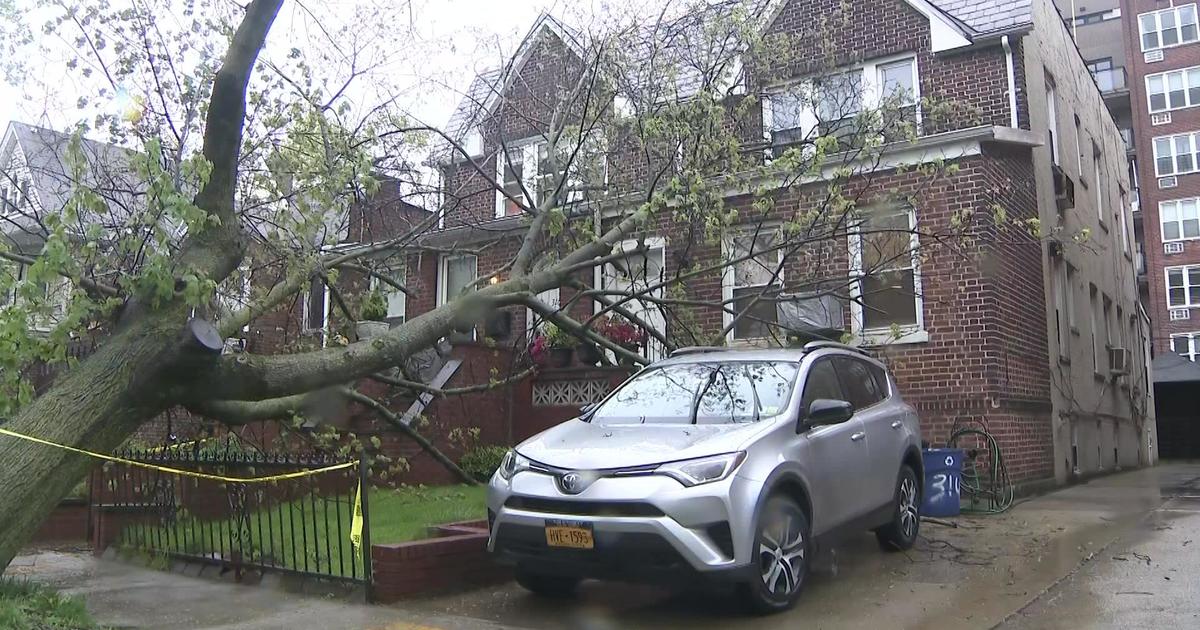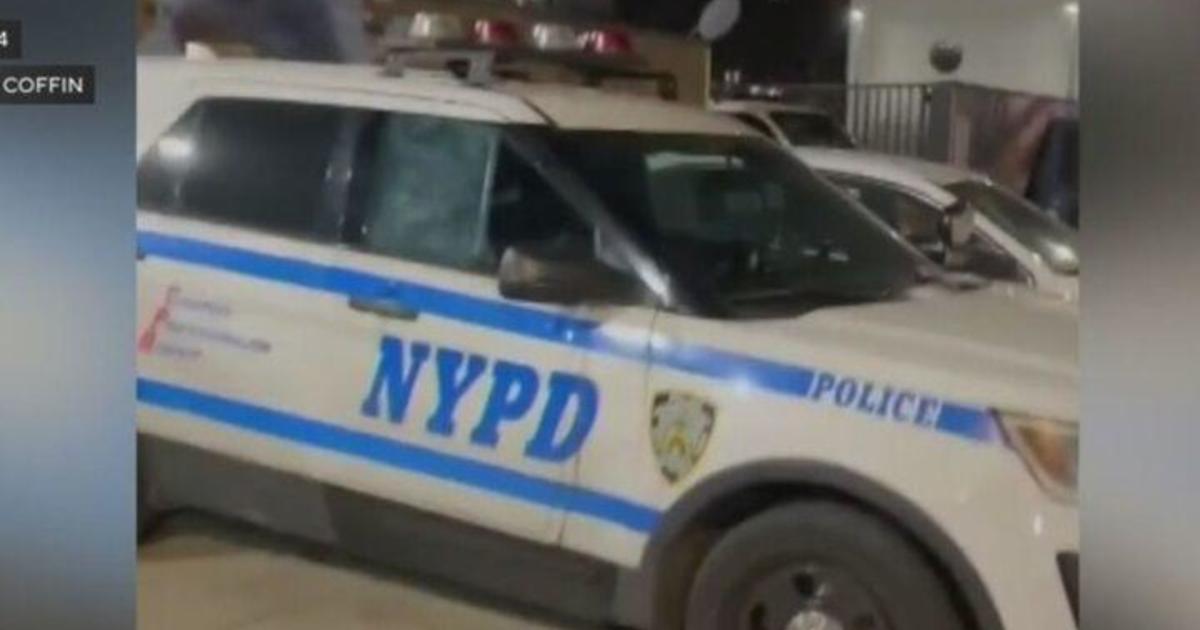NTSB: Blood, Urine Samples Taken From Engineer Involved In Deadly NJ TRANSIT Train Crash
HOBOKEN, N.J. (CBSNewYork) -- Federal investigators said the crew is cooperating but they still are unable to get to the rail cars following Thursday's NJ TRANSIT train crash at the Hoboken terminal that left one woman dead and more than 100 people injured.
CBS2's Jessica Layton reports the biggest challenge for investigators is the massive damage done to the terminal.
National Transportation Safety Board Vice Chairwoman T. Bella Dinh-Zarr said during a news conference Friday afternoon that investigators have obtained a blood and urine sample from the engineer -- 48-year-old Thomas Gallagher -- and it has been sent for toxicology examination.
"It will take a while" for the results to come back, Dinh-Zarr said.
They have yet to speak to Gallagher but have scheduled an interview with him. The NTSB is hoping to interview all key crew members Saturday.
Dinh-Zarr explained that the NTSB is waiting for contractors to remove the canopy so investigators can safely get to the other rail cars and to also obtain the second event recorder in the cab car. She said they are also concerned about the asbestos in the building.
"Obviously, as we have structural concerns, we have environmental concerns. We are checking the air quality," she said.
NTSB's Jim Southworth said he won't let investigators go deeper into the terminal because of the damage.
"Because of the asbestos and because of the unsettled structures we're not sure about, I'm not allowing anybody to go in there," Southworth explained.
It could be another day or two before the second recorder is retrieved.
Gov. Chris Christie said he's been told the investigation could take at least seven to 10 days.
The NTSB recovered an event recorder in the locomotive at the rear of the train, which could help provide information on the train's speed and braking.
NJT Crash: Latest | Transit Changes Guide | Video | Photos
"There is also an event recorder in the cab car, the controlling car, and we'll be getting that as soon as we can access that," Dinh-Zarr said.
However, the data from the locomotive recorder is not downloadable due to a technical issue and they will have to bring it to the manufacturer to obtain the data.
NTSB spokesman Christopher O'Neill said investigators are having trouble extracting that recorder from the forward-facing camera without damaging it. He said it should show what was ahead of the train before it crashed.
O'Neill said the terminal, which was heavily damaged in the crash, is a mess.
"It's a pretty extraordinary site," he said. "Ceilings are down. The train is right up against the outside wall of the station."
Officials are hoping to get a contractor into the terminal Friday to help secure the area.
"We hope to be able access the cars that we weren't able to before, maybe later in the day," Dinh-Zarr said. "In the meantime, we hope to get records, maintenance records, employment records and possibly interview the crew members."
Investigators will be examining two cameras on the front and back of the train. There is also surveillance video that shows the train in Hackensack about 40 minutes before the crash.
The NJ TRANSIT portion of the terminal remains closed Friday, and rail service in and out of Hoboken is suspended.
CBS2's Tony Aiello reported that video taken on the roof of the train shed shows the mess left behind after the crash – wires, glass and metal.
Trains stuck at the station overnight because of the accident were pulled out of Hoboken terminal Friday morning.
It was around 8:45 a.m. Thursday during the crowded morning commute when the train, driven by Gallagher, came barreling into the terminal on Track 5.
Witnesses described a loud boom and screeching.
"Like nails on a chalkboard and then just deafening silence, and all of a sudden screams, terror, shrieks and everything," one man said.
"We were going at a decent rate of speed, and then we just didn't stop. There was a very sudden jolt. We got jolted out of our seats. There was a very loud crash and explosion outside," passenger Ross Bauer said.
The speed limit for trains coming into the terminal is 10 miles per hour, but witnesses said the train never slowed down.
"It went over the bumper block, basically through the air," NJ TRANSIT worker Michael Larson said.
"We were pulling into the station, I was thinking we're not stopping, we haven't slowed down" passenger Lauren Berlamaino said. "The next thing I know, my head went forward, I hit the seat, and I come back to and there was screaming."
"It simply did not stop," said WFAN sportscaster John Minko, who was headed down to the PATH train when he saw the train crash into the station. "It went right through the barriers and into the reception area."
Fabiola Bittar de Kroon, a 34-year-old wife, attorney and mother, was killed from the falling debris. She had just dropped her daughter Julia off at day care before rushing to catch a train.
Dan McMenamin's son goes to daycare with de Kroon's 22-month-old daughter.
"It's just tragic," McMenamin said.
Christie and New York Gov. Andrew Cuomo both visited the crash site Thursday, refusing to speculate on the cause and deferring to the investigators.
"You don't jump to conclusions," Christie said. "You let the facts lead you to those conclusions."
Hoboken Mayor Dawn Zimmer is calling for positive train control to be installed, which would have automatically stopped the train if it did not brake.
"We need to get it implemented as quickly as possible," she said.
The NTSB has listed the lack of the technology as a contributing factor in 25 crashes over the past 20 years.
CBS2's Kris Van Cleave reports investigators will try to determine if positive train control could have prevented the speeding NJ TRANSIT train from crashing into the terminal as the train did not have the technology.
PTC relies on GPS satellites, radio towers and ground sensors to monitor a train's speed and location. If it detects a train is going too fast or being operated unsafely, onboard computers kick in to slow or stop it.
On Mother's Day in 2011, a PATH train hit a post at the end of a track in Hoboken, injuring dozens. The NTSB found the engineer failed to slow down entering the station.
"In 2011, when the crash happened in Hoboken, what came out of the NTSB report was that the positive control system could have made a difference," Zimmer said.
In 1985, a NJ TRANSIT train crashed into a bumper at the end of a track while traveling at 10 mph, injuring more than 50 people. Investigators found the train couldn't stop because of a slippery gel used to test train wheels days earlier.
A spokeswoman for NJ TRANSIT referred all questions about positive train control to the NTSB.
Meanwhile, Gallagher was injured but released from the hospital Thursday afternoon. He has 29 years on the job with about 18 of those as an engineer. The NTSB says he is cooperating with the investigation.
"The purpose of our investigations is always to find out what happened," Dinh-Zarr said. "Most people are very cooperative because they know that we're the folks coming in just to see what we can do to prevent it from happening again, not to lay blame."
NTSB investigators will also be focusing on what Gallagher was doing in the 72 hours before the crash, including use of medication, alcohol and amount of sleep.
"To make sure we know what his actions were, whether he got enough sleep," said Dinh-Zarr.
In addition to operator performance, they'll also be closely looking at mechanics and the train's braking system to see whether they were properly functioning.




